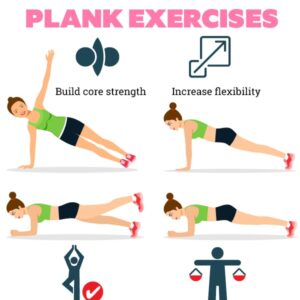There are many different types of diets that can be used for weight loss. Some popular ones include:
1. Low-carb diets : These diets involve reducing the intake of carbohydrates, which can lead to weight loss by forcing the body to burn stored fat for energy instead of using the glucose from carbohydrates. Examples of low-carb diets include the Atkins diet and the ketogenic diet.
A low-carb diet is a type of diet that restricts the consumption of carbohydrates, typically in favor of more protein and fat. The goal of a low-carb diet is to lower the body’s insulin levels, which can result in weight loss, improved blood sugar control, and other health benefits.
Low-carb diets can come in various forms, such as the ketogenic diet, which is a very low-carb, high-fat diet that is designed to induce a state of ketosis in the body. In this state, the body burns fat for fuel instead of carbohydrates. Other low-carb diets, such as the Atkins diet, allow for a gradual increase in carbohydrate intake as the diet progresses.
While low-carb diets can be effective for weight loss and other health benefits, they may not be appropriate for everyone. It’s important to talk to your doctor before starting a low-carb diet, especially if you have any medical conditions or are taking any medications. Additionally, it’s important to follow a balanced diet that includes a variety of nutrient-dense foods, as cutting out entire food groups can lead to deficiencies in essential nutrients.
2 Low-fat diets : These diets involve reducing the intake of fat, particularly saturated and trans fats, and increasing the intake of carbohydrates and protein. The goal is to reduce calorie intake and promote weight loss.
A low-fat diet is a type of diet that restricts the consumption of dietary fat, typically in favor of more carbohydrates and protein. The goal of a low-fat diet is to reduce the total amount of fat in the diet and, as a result, lower the intake of calories. By reducing calorie intake, low-fat diets can lead to weight loss and improved health.
Low-fat diets usually involve reducing the amount of saturated and trans fats in the diet, which have been linked to an increased risk of heart disease, and increasing the consumption of unsaturated fats, which are considered to be healthier. Low-fat diets also often emphasize the consumption of fruits, vegetables, and whole grains.
While low-fat diets can be effective for weight loss and other health benefits, they may not be appropriate for everyone. It’s important to talk to your doctor before starting a low-fat diet, especially if you have any medical conditions or are taking any medications. Additionally, simply reducing the amount of fat in the diet without considering the quality of the food you’re eating can lead to an unbalanced diet that is low in essential nutrients.
3. Intermittent fasting : This is an eating pattern that involves restricting food intake for certain periods of time, such as only eating during an 8-hour window each day. Intermittent fasting can lead to weight loss by reducing calorie intake.
Intermittent fasting is a type of eating pattern that alternates periods of fasting with periods of eating. The goal of intermittent fasting is to reduce calorie intake, which can lead to weight loss and other health benefits.
There are several different forms of intermittent fasting, each with its own unique approach to fasting and eating. Some popular forms of intermittent fasting include:
Time-restricted feeding: This involves fasting for a set number of hours each day and only eating during a specific time window. For example, you might eat only between the hours of 12 pm and 8 pm, and fast for the remaining 16 hours.
Alternate-day fasting: This involves fasting one day and eating the next, repeating the cycle.
The 5:2 diet: This involves eating normally for five days a week and restricting calorie intake to 500-600 calories on the other two days.
Intermittent fasting has been shown to have several health benefits, including weight loss, improved insulin sensitivity, and reduced inflammation. However, it’s important to talk to your doctor before starting an intermittent fasting program, especially if you have any medical conditions or are taking any medications. Intermittent fasting may not be appropriate for everyone, and it’s important to make sure that it’s safe for you.
4. Meal replacement diets: These diets involve replacing one or more meals per day with a structured meal replacement product, such as a shake or bar. The goal is to reduce calorie intake and promote weight loss.
A meal replacement diet is a type of diet that involves replacing one or more daily meals with a commercially available meal replacement product, such as a shake, bar, or soup. The goal of a meal replacement diet is to reduce calorie intake and, as a result, promote weight loss.
Meal replacement diets typically provide a set number of calories and are formulated to provide a balanced blend of macro nutrients, including protein, carbohydrates, and fat, as well as essential vitamins and minerals. The meal replacement products are designed to be convenient and easy to use, making it easier to stick to the diet.
While meal replacement diets can be effective for weight loss, it’s important to talk to your doctor before starting a meal replacement diet, especially if you have any medical conditions or are taking any medications. Additionally, it’s important to make sure that you’re getting a balanced diet that includes a variety of nutrient-dense foods, as relying solely on meal replacement products can lead to deficiencies in essential nutrients.
It’s also important to note that meal replacement diets are not a long-term solution to weight loss and should only be used as a temporary tool to help you achieve your goals. Once you’ve reached your desired weight, it’s important to transition back to a balanced, whole-food diet in order to maintain your weight loss and improve your overall health.
5. Portion control diets: These diets involve controlling the portion sizes of the foods you eat in order to reduce calorie intake and promote weight loss.
Portion control diets are diets that focus on controlling the amount of food that is eaten, rather than the types of foods that are consumed. The goal of portion control diets is to help people eat less and reduce their calorie intake, which can lead to weight loss and other health benefits.
In a portion control diet, the focus is on managing the size of the portions of food that are consumed, rather than counting calories or limiting specific foods. This can be done by using smaller plates, bowls, and cups, or by measuring out portions of food to ensure that they are the appropriate size.
Portion control diets can be effective for weight loss and other health benefits, but they may not be appropriate for everyone. It’s important to talk to your doctor before starting a portion control diet, especially if you have any medical conditions or are taking any medications. Additionally, simply controlling portion sizes without considering the quality of the food that you’re eating can lead to an unbalanced diet that is low in essential nutrients.
In order to be successful with a portion control diet, it’s important to make gradual changes to portion sizes and to be mindful of hunger and fullness cues. Over time, your portions will naturally become smaller, and you’ll be able to maintain your weight loss and improve your overall health.
It’s important to note that any diet can be effective for weight loss as long as it results in a calorie deficit, meaning that you are burning more calories than you are consuming. However, it’s also important to choose a diet that is sustainable and that meets your nutritional needs. It’s always a good idea to speak with a healthcare professional or a registered dietitian before starting any new diet.





